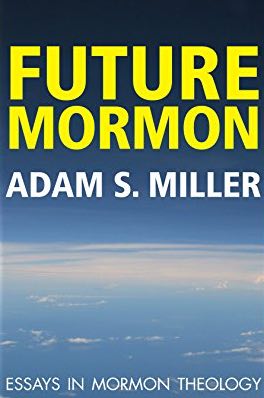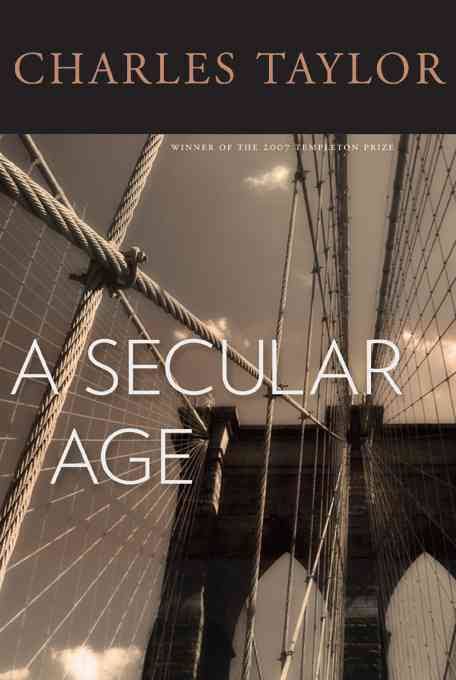Category: Mormon Review
-
Let’s Talk about the Book of Abraham–a Review
Kerry Muhlstein’s Let’s Talk about the Book of Abraham Is the latest entry in a series that Deseret Book has been publishing to address controversial or touchy topics in the Church. Based on my experience with Brittany Chapman Nash’s Let’s Talk About Polygamy (the previous volume in this series of books), I had expected something…
-

Future Mormon Reading Club
The person who probably comes closest to my own views on many matters is Adam Miller. Back in the heyday of LDS-Herm we had tons of fantastic discussions on theology and philosophy. Ever since Adam’s last book came out I’ve wanted to do a reading club on it but just hadn’t had the time. One…
-

Enchantment and Disenchantment: Secular Age Round 3
(Links to Rounds 1 and 2) These next several posts will cover chapters in Parts I-III, which comprise Taylor’s account of the western historical trajectory towards secularity, from the enchanted world of 1500 AD to the disenchanted and pluralistic one of 2000 AD. Overall, Taylor’s historical account challenges the “subtraction” stories that explain the road to…
-
MR: Samurai Jesus: A Review of Takashi Miike’s “Hara-Kiri: Death of a Samurai”
The Mormon Review vol. 5 no. 1 is presented here, with Jonathon Penny’s review of Takashi Miike’s 2011 film Hara-Kiri: Death of a Samurai. By Jonathon Penny Open on a gaunt, intelligent looking man—Tsukumo Hanshiro—seeking the indulgence of a retinue of samurai at the palace of a feudal lord. He claims to be a ronin, a…
-
MR: Exquisitely Loud and Indelibly Close
The Mormon Review vol. 4 no. 1 is presented here, with Jonathon Penny’s review of Stephen Daldry’s 2012 film Extremely Loud and Incredibly Close. By Jonathon Penny I’m late with this, as with so much in my dog-eared, half-buttoned, last minute, Subway-sandwiched, twenty-first century life. I wrote the other day, on reflection about the harried…
-
Books of Interest to the LDS Nerd
A few of these are forthcoming, a few have appeared recently. I am compelled to read them all, as soon as I can get to them. Now Available Charles Harrel,“This Is My Doctrine”: The Development of Mormon Theology (Kofford Books) “In this first-of-its-kind comprehensive treatment of the development of Mormon theology, Charles Harrell traces the…
-
MR: Death Is Lighter than a Feather: A Review of C.S. Lewis’ The Great Divorce
A new issue of The Mormon Review is available, with Adam Greenwood’s review of The Great Divorce, by C.S. Lewis. The article is available at: Adam Greenwood, “Death Is Lighter than a Feather: A Review of C. S. Lewis’ The Great Divorce,” The Mormon Review, vol.3 no. 1 [HTML] [PDF] In this essay, Greenwood reads…
-
MR: Groundhog Day
A new issue of The Mormon Review is available, with Adam Miller’s review of Groundhog Day, directed by Harold Ramis. The article is available at: Adam Miller, “Groundhog Day,” The Mormon Review, vol.2 no. 5 [HTML] [PDF] For more information about MR, please take a look at the prospectus by our editor-in-chief Richard Bushman (“Out…
-
MR: “Recovering truth: A review of Hans-Georg Gadamer, Truth and Method”
A new issue of The Mormon Review is available, with James E. Faulconer’s review of Truth and Method by Hans-Georg Gadamer. The article is available at: James E. Faulconer, “Recovering truth: A review of Hans-Georg Gadamer, Truth and Method,” The Mormon Review, vol.2 no. 3. [HTML] [PDF] For more information about MR, please take a…
-
MR: “You’ll Never Walk Alone: The Mormon Church, Proposition 8, and British Soccer”
A new issue of The Mormon Review is available, with David K. Jones’s review of You’ll Never Walk Alone by Richard Rodgers and Oscar Hammerstein. The article is available at: David K. Jones, “You’ll Never Walk Alone: The Mormon Church, Proposition 8, and British Soccer,” The Mormon Review, vol.2 no. 1 [HTML] [PDF] For more…
-

MR: “Getting Your Hands Dirty”
A new issue of The Mormon Review is available, with Russell Arben Fox’s review of Shop Class as Soulcraft: An Inquiry into the Value of Work by Matthew Crawford. The article is available at: Russell Arben Fox, “Getting Your Hands Dirty: Notes on How Mormons (and Everyone) Should Work,” The Mormon Review, vol.1 no. 8…
-
MR: “Music From Across the Divide”
A new issue of The Mormon Review is available, with a review of the music of Sara Groves by Troy Keller. The article is available at: Troy Keller, “Music From Across the Divide,” The Mormon Review, vol.1 no. 7 [HTML] [PDF] For more information about MR, please take a look at the prospectus by our…
-
MR: “The Romance of Materialism: Notes on Hitchcock’s Vertigo”
A new issue of The Mormon Review is available, with a review of Alfred Hitchcock’s movie “Vertigo” by Joseph M. Spencer. The article is available at: Joseph M. Spencer, “The Romance of Materialism: Notes on Hitchcock’s Vertigo,” The Mormon Review, vol.1 no. 6 [HTML] [PDF] For more information about MR, please take a look at…
